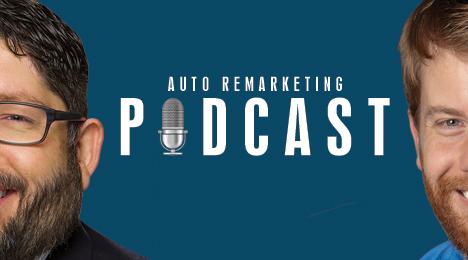The data points Cox Automotive found through its dealership staffing study are startling.
Stores have a 67-percent annual turnover rate among its sales teams, and the average cost of hiring a new dealership employee is $10,000.
Perhaps one of the primary reasons dealerships are burdened by those personnel challenges is connected to training — or the lack of it. The anecdotes shared by Isabelle Helms, vice president of research and market intelligence at Cox Automotive, paint a grim picture.
During a phone conversation before the study was released this week, Helms told Auto Remarketing, “One person said, ‘I assisted with a salesperson for one week and then they threw me out to the sharks.’”
“Another one said, ‘Training? Huh? I was required to complete all online ‘training’ mandated by the OEM and the dealer. Otherwise there’s never any training,’” Helms continued.
The 2017 Cox Automotive Dealership Staffing research was conducted on behalf of Cox Automotive by KS&R with consultation from Hireology. The study was fielded among a random representative sample of 50 dealer owners, principals and general managers through an online discussion about their current dealership staffing practices and challenges.
The project also included 343 dealership employees through an online quantitative survey about their experience as a dealership employee as well as 834 U.S. general population also through an online quantitative survey about their opinions about working at a dealership.
Helms suspected the project would highlight the stereotypical challenges about working at a dealership — long hours during a six-day workweek while being compensated mainly by commission. However, Helms emphasized it was the training component that she thought impacted dealerships most, especially since it’s possible that the quality of worker support could be improved.
“We know there are dealerships out there, in particular the more progressive dealerships, the larger dealer groups, that have formal training programs in place. Those are the ones who should be modeled. But for the most part we saw a huge absence in training,” Helms said.
Beyond the sales team churn and the cost of hiring new employees, Helms also noted how workforce issues can cause other problems for stores, including planning for long-term objectives.
“Many dealers are having to think about the future. They’re thinking about how they’re going to have to evolve and create a dealership of the future,” she said. “When you’re constantly focused on retaining your staff, or bringing on board new staff, that leaves very little time to really think about how you’re going to evolve your model and how you’re going to set up your dealership to compete.”
Furthermore, Helms also mentioned how customer loyalty can erode if buyers seeing new people working at the dealership each time they make a purchase or come in for service.
“Once you create a rapport with someone at the dealership, you expect that person to be there,” Helms said. “Loss of customer loyalty can be a factor because we know from research that the two more important factors that go against a positive customer experience at the dealership; it’s the sales staff followed by F&I staff.
“If you’re having turnover in those two areas in particular, your customer loyalty tends to sustain a significant impact,” she added.
The study showed turnover within the F&I office is lower than the store’s sales department — 38 percent versus that 67 percent figure. But overall, dealerships are sustaining a 40-percent turnover rate across all department.
And referencing back to that $10,000 average that it costs to a hire a new employee, “You can do the math quickly. If you’re experiencing 40 percent turnover at your dealership, that runs up pretty quickly,” Helms said.
Yet one other potential pitfall for employee churn: Helms pointed out that maintaining and refining operational efficiencies might not happen to the degree ownership would like.
“If you’re constantly rolling in new employees, you don’t have the chance to build processes into the business and find the opportunity where you can improve,” she said.
With so much at stake — both financially and with non-tangible costs — Cox Automotive’s study also included some thoughts for dealerships to consider, including:
— Look at your culture and pay plans and make changes where necessary.
— Review your hiring process to properly assess talent, accelerate early relationships with managers and peers and share information about career opportunities in your organization.
— Make sure your development plans support performance expectations.
“My hope by conducting this research is we’ll be able to change people’s opinion about what it’s like to work in the automotive industry, in particular, dealerships,” Helms said. “It’s an exciting new world. The world at dealerships is changing significantly. We need the next generation of workers to embrace looking at this industry differently.”
On July 10, the Consumer Financial Protection Bureau (CFPB) issued a rule banning companies from denying arbitration to groups of people. And, if everything passes, the law should go into effect in September. For auto retail dealers and lenders, this change is just one more turn of the screw clamping down on the ability to do business.
The new ruling stipulates that auto dealers and their lending partners will still be able to include arbitration clauses in their contracts. But those clauses may not be used to prevent consumers from joining a class action lawsuit. The rule specifies the language that must be used in the contract. Companies are also required to submit detailed information to the CFPB about claims and awards made in arbitration. That data eventually will be made public, with consumer names and identifying data removed. It’s no wonder dealers and lenders are feeling like Big Brother is looking over their shoulders.
Shaun Petersen, vice president of legal and government affairs with the National Independent Auto Dealers Association (NIADA) recently joined the EFG Companies Common Sense Compliance podcast and shared some thoughts on how this ruling might impact dealers in the future.
“While the original purpose of the CFPB was to ‘root out’ unfair, deceptive or abusive acts or practices, supervise companies, and enforce laws,” Petersen said, “the bureau has certainly had its eye on the automotive market. While there are certainly some bad actors, the majority of auto dealers and lenders are trying to help the consumer. This additional ruling complicates these efforts.”
“This rule will force small businesses to bear additional costs in defending class-action litigation, particularly meritless suits,” Petersen continued. “Those costs will ultimately be borne by consumers, and in the case of those who are credit-challenged, it could prove to be too much.”
Petersen outlined some of the steps the NIADA is taking to work with key members of Congress to oppose the ruling. “From the outset of this rulemaking process, NIADA has voiced concern about the poor policy reflected in this proposal to both the CFPB and to members of Congress,” Petersen said. “As Congress considers CFPB reform, we will be urging lawmakers to overturn this anti-consumer rule.”
In the meantime, Petersen encouraged dealers and lenders alike to review their contract language, as well as any other materials which discuss the consumer’s rights to contract arbitration. “The ruling is scheduled to take effect Sept. 18,” Petersen elaborated. “While we continue to work with members of the House and Senate to oppose this ruling, we also don’t want dealers and lenders to be caught flat footed.”
Compliance is certainly a growing challenge for auto dealers and their lending partners. When entities such as the CFPB issue wide-ranging rulings, it’s no wonder that dealer principles, F&I teams and lenders throw up their hands in frustration. How can you manage the pressure from this latest turn of the compliance screw? Stick to your compliance checklist and leverage available resources from industry associations and providers. And turn the screw back toward your favor.
As vice president of compliance at EFG Companies, Steve Roennau utilizes his extensive industry experience to provide EFG clients a sophisticated analysis of their current compliance procedures and proactively prepare them for upcoming changes in federal and state regulations. Steve is an AFIP Senior Certified Professional in Financial Services, and has developed compliance training modules in the areas of adverse action, privacy rule, risk-based pricing/exception notice, red flag rule, safeguards rule, deceptive practices, and federal and state regulations. In addition, he has conducted several compliance courses, including compliance workshop for dealership managers; AFIP prep course for F&I producers; and, F&I compliance training for F&I producers. He can reached at [email protected].
TCN and DealerSocket announced Wednesday a new partnership to create a seamless integration between TCN’s advanced cloud-based contact center solution, Platform 3.0 and DealerSocket’s iDMS for independent and buy-here, pay-here dealerships.
The integration can help dealers improve customer service operations, conduct effective marketing campaigns and streamline their payment collection process.
Performing outreach via TCN’s integrated and automated dialing tools can lower dealer's outreach cost by 75 to 90 percent, according to the company.
“We are proud to partner with DealerSocket to provide our advanced and adaptive contact center technology for the automotive industry, providing new and innovative ways for independent and BHPH dealers to effectively engage and communicate with their customers,” TCN director of business development Bryce Payne said in a news release.
“We are confident that this partnership will help streamline operations, automate customer outreach and increase overall revenue streams for dealerships of any size.”
The advanced omnichannel contact center technologies now available via DealerSocket’s iDMS include TCN’s: Auto Dialer and Predictive Dialer, Interactive Voice Messaging, AgentSMS, VocalDirect and Business Intelligence.
In time for this upcoming fall shopping season, Autotrader’s September list of top picks for certified pre-owned deals includes attractive incentives from Volvo, which boasts seven years or 100,000 miles of comprehensive warranty coverage from the original sale date and zero-percent interest for up to 24 months on CPO 2015 S60 sedan models.
"If car shoppers don't want to spend too much money on a brand-new car, but still want a vehicle that's reliable and trusted, a certified pre-owned model is a great choice," Autotrader executive editor Brian Moody said in a news release. "And the good news is that many automakers offer deals and incentives on CPO cars, giving the consumer a major advantage."
Autotrader editors' top picks for certified pre-owned deals for September include:
— This month, Ford's CPO program offers seven years or 100,000 miles of powertrain coverage and 12-month or 12,000-mile bumper-to-bumper warranty after the original factory warranty expires. Qualified buyers of select CPO Ford models can get 1.9-percent interest for up to 66 months.
— Kia’s program is offering qualified buyers an attractive incentive through the end of September. Through the end of the month, shoppers can buy a CPO Kia with just 1.9-percent interest for up to 36 months.
— The Lexus CPO program’s warranty coverage touts six years of protection with no mileage limit through the end of the month. Additionally, this month, Lexus is offering its large ES luxury sedan to qualified shoppers with 0.9-percent interest for up to 48 months on both gasoline and hybrid-powered models.
— At Mazda, shoppers can take advantage of a long powertrain warranty of seven years from the car's original sale date or 100,000 miles, as well as an additional 12-month or 12,000-mile extension to the car's comprehensive warranty. This month, Mazda's CPO program also offers qualified shoppers certain CPO Mazda models with 1.49-percent interest for up to 36 months.
— This month, Land Rover is offering buyers seven years or 100,000 miles of bumper-to-bumper protection. Qualified shoppers interested in a CPO Evoque can get rates as low as 0.9 percent for 24 months, or 1.9 percent for up to 60 months through the end of the month.
— Subaru's CPO program touts a warranty of seven years or 100,000 miles of powertrain protection from the original sale date. Qualified Subaru shoppers can also get 1.49-percent interest for up to 36 months on select CPO models.
— Throughout the end of the month, Volkswagen’s CPO program is adding two years or 24,000 miles of bumper-to-bumper protection to the original three-year or 36,000-mile factory warranty for a total of 5 years or 60,000 miles of coverage. Qualified shoppers can also get 1.99-percent interest for up to 60 months and up to $500 cash back, on all CPO VW models.
— This September, Volvo's CPO program boasts seven years or 100,000 miles of comprehensive warranty coverage from the original sale date and a deal on CPO 2015 S60 sedan models. Shoppers can purchase CPO versions of the sedan with zero percent interest for up to 24 months. Additionally, Volvo models of other years are available with rates starting at 0.9 percent for 24 months.
With some interesting anecdotes about how dealers are handling hurricane fallout, Black Book also highlighted how one specific segment impacted the entire truck segment.
This week’s Black Book Market Insights report mentioned compact SUVs increasing their value noticeably, giving the truck segment an overall boost in retention value.
Editors noticed the car segment depreciated by a standard amount with only one vehicle category — midsize cars — increasing in value by 0.13 percent.
“Active buying continued last week as Texas dealers replenished their inventory. Compact SUVs and midsize cars did well,” said Anil Goyal, Black Book’s senior vice president of automotive valuation and analytics, who is among the wide array of experts coming to Used Car Week, which begins on Nov. 13 in Palm Springs, Calif.
Volume-weighted, Black Book reported that overall car segment values decreased by 0.48 percent last week, similar to the average weekly decrease of 0.41 percent in values over the previous four weeks.
Editors noticed luxury and sporty vehicles in car segments declined the most at 0.87 percent each.
Again volume-weighted, Black Book pointed out that overall truck segment values (including pickups, SUVs and vans) were nearly flat compared to the average weekly decrease of 0.27 percent in values spotted during the previous four weeks.
Editors reported the compact crossover/SUV and compact van segments increased the most among truck segments by 0.37 percent and 0.51 percent, respectively.
As Goyal referenced, Lone Star State dealers are heading to the lanes to find vehicles as consumers impacted by Hurricane Harvey are looking for replacement vehicles. In fact, one of Black Book’s observers at a Georgia auction watched the action happen.
“A dealer from San Antonio bought a lot of vehicles for strong money. He stated that he usually buys 15 units a week but bought 41 at this auction alone today to meet the demand back home,” Black Book’s representative said.
Within the state of Texas, the activity was even more intense.
“Sold almost everything today, and the buyers that usually don’t buy high mileage units were not discriminating today,” Black Book’s lane watcher in Texas reported.
Another report from Texas added, “Hundreds of flooded new vehicles at the auction where they were marshalling them before they were to be crushed.”
Black Book’s other two reports from the lanes mentioned much less active scenes.
From Tennessee: “Lots of no-sales as dealers and commercial accounts are holding their floor prices in advance of the anticipated high demand caused by the recent storms.”
From Colorado: “Low attendance and low vehicle volume but the vehicles that were here sold well.”
You dropped your car off for service at the dealership and hours later, you have no idea about its prognosis or when the work might be complete.
These frustrations a consumer might have during the vehicle service and repair process come to mind fairly quickly.
And largely, they revolve around notifications that the vehicle is in service and the vehicle pickup process, says Patrick Southward, the co-founder of Singlethread.
“But from the dealership side, as well, there’s a lot of frustrating aspects from an advisor’s standpoint. One, trying to communicate with a customer while that vehicle’s in the shop, whether that (might) be getting services approved or giving those status updates, and so on and so forth,” said Southward, a former dealer himself, in a phone interview.
“So, Singlethread was born around those issues for both the consumer and dealership user or employee,” he said.
The company was founded by Southward and Will Mapes, whose background is in providing technology solutions to car dealers, including time with RouteOne.
Singlethread provides dealers web-based software that’s designed to help them with communication, including providing text-messaging communication for the service department.
The text-messaging platform, which Mapes and Southward say can easily integrate with the major DMS providers, allows dealers to communicate vehicle-service status updates in real time.
Whenever a change is made in the DMS regarding a vehicle that is in service, Singlethread is able to pick up those changes and notify the consumer with a status update.
It also includes built-in estimates, pictures and video. It can also help the dealer educate a consumer on a job that needs to be done. It also includes a mobile bill pay, Southward said.
And now, the company is entering into the electronic inspection space.
“We’ve set out a really good foundation with our text messaging products. The inspection side of things is the newest area we’re making entry in. And a lot of the dealerships around the country are doing their vehicle inspections by hand,” Mapes said. “So, they’re doing them with paper forms and using pens, and checking off different things on the forms. And then those forms are either being handed to a customer — hopefully, at some point — or sometimes they’re not even being completed in the dealership.
“And a lot of it is just based a lot of that frustration,” Mapes said. “If the technician goes through the process of doing a vehicle inspection, which takes some time to do, and then that isn’t being used or isn’t getting to a customer, the effectiveness of that inspection and the amount of times it gets completed and accurately goes down.”
With that in mind, Singlethread is launching an electronic inspection product, designed for easy use, that’s integrated into the existing Singlethread product.
Once the technician finishes the inspection, it allows the advisor to easily transmit that inspection to the customer along with an estimate on repairs, and then get a decision from the customer quickly. The company has been beta-testing the product and, as of mid-September, had plans to roll it out shortly, Mapes said.
It is designed to integrate into a seamless platform, where the dealer can text-message the customer, deliver what they need in terms of service (including having their car inspected), and then give the customer the ability to utilize mobile pay.
Singlethread utilizes an opt-in method that allows the company to track utilization, which they say is at least 80 percent.
“When we first started the program, (consumers) wanted to text message with the dealership,” Mapes said, “because it made their transaction a lot more efficient.
“And dealers sort of adopted it to satisfy the customers, but we’re seeing now a lot of our dealers are really, really pushing on the consumer, even consumers that might say, ‘You know, I don’t really want to text,’” Mapes said.
“And the dealers are realizing how much more efficient it is for them” and so they’re encouraging the customers to utilize texting as an effective way for the consumer to receive estimates, inspections and pay for the service, he said.
“The volume of text messaging has really sky-rocketed this year,” Mapes said.
For those consumers who do have concerns with texting, most want to know they’re not going to be inundated with spam or mass marketing.
“Which of course we do not do,” Southward. “We’ve been asked by dealers, ‘can we send out a blanket text to everybody?’ And we have to educate the dealers at that point, and say ‘Here’s why you don’t want to do it.’ And 95 percent of them agree with that.”
And if the shopper or dealer needs further convincing as to the benefits of text messaging in the service department, consider what Mapes and Southward wrote in a post this March: “Dealerships that use text messaging for their ROs (rather than the phone) can expect to generate more customer pay revenue. In today’s mobile-first environment, customers are more visual than ever. They want to know what’s broken, what it will cost to fix it, and when it will be done.
“Text messaging is easier, faster, and more transparent than a voice call can be. Texting can accomplish these objectives in a matter of minutes rather than dealing with frustrating voicemail and phone tag that may take hours.”
While car searches on mobile devices surpass those performed on desktops and laptops, because most consumers who make phone calls to dealerships shop on their desktops, automotive marketers should consider how they direct digital ad spend between both desktops and mobile devices, especially during the industry’s two peak sales seasons, says a recent study.
Shoppers on their desktops and laptops made up 54.8 percent of call conversions from dealer websites, while only 45.2 percent of calls come from visitors on mobile devices, according to a study on shoppers who make phones to dealerships by DT University, the educational and training center of DialogTech.
DialogTech said its DT University examined more than 1.1 million phone calls made to thousands of U.S. and Canadian dealerships from 2015 through August 2017.
During the two peak sales seasons, March to May and September to November the study found that gap between desktop and mobile generated calls is even greater.
Desktop shoppers drive both the most calls and revenue, according to DialogTech.
Below lists the percentage of how many more desktop and laptop calls dealerships received during peak sales seasons:
First Peak Sales Season
- March: 22.2% more calls from desktop/laptop than mobile
- April: 27.3% more calls from desktop/laptop than mobile
- May: 27.3% more calls from desktop/laptop than mobile
Second Peak Sales Season
- September: 22.2% more calls from desktop/laptop than mobile
- October: 22.2% more calls from desktop/laptop than mobile
- November: 56.4% more calls from desktop/laptop than mobile
“There is no shortage of great marketing research on the importance of smartphones to the customer journey of every industry, including automotive,” DialogTech director of content marketing, Blair Symes said in an email interview with Auto Remarketing.
“At DialogTech, we've even published a lot of it. But in the rush to optimize everything for mobile, it can be easy to forget about the desktop. That's why it's important that marketers understand what devices shoppers use at each stage of the customer journey, including when they convert online or over the phone, and tailor their ad campaigns and customer experiences to generate maximum return,” he continued.
To increase ROI, the study encourages marketers to use data on what devices brings the most calls on each specific day to help direct digital ad spend appropriately.
According to the study, desktop and laptop shoppers drive more calls during the week, while mobile shoppers make more calls on the weekends.
The study also suggests that dealerships pay closer attention to callers because on average, shoppers who call a dealership purchase vehicles 10 times more than consumers just who fill out a form online, according to the study.
DialogTech said it collected its phone call data from its voice management platform, which tracks, millions of calls generated by automaker and dealership website visitors across North America each year.
As Edmunds offered five suggestions for how to spot a flood-damaged vehicle, new research from Carfax released on Wednesday suggested that drivers may be behind the wheel of more than 325,000 previously flooded vehicles.
Analysts computed that number is a 20-percent increase from 2016.
Carfax also compiled a list of 10 states that have the most vehicles reported as flood damaged by a state’s department of motor vehicles (DMV) and insurance companies. That rundown includes:
1. Texas: 51,000
2. Louisiana: 29,000
3. Pennsylvania: 20,000
4. Florida: 19,000
5. Kentucky: 16,000
6. Illinois: 15,000
7. South Carolina: 13,000
8. Virginia: 13,000
9. North Carolina: 13,000
10. Michigan: 11,000
Carfax shared the frustration of one consumer who purchased a vehicle unaware of its flooded past.
“I bought a car last year, and the seller never told us anything about it being a flood car,” said Charlene Geiger from Pennsylvania. "When we got home and ran a Carfax, there it was — a flood car from Hurricane Sandy. It showed that the seller bought it as a salvage car and the title was washed when he brought to Pennsylvania. We lost $16,000 over all of it.”
In addition to the current total, Carfax suspects that several hundred thousand more flooded vehicles may emerge from hurricanes Harvey and Irma. Historically, the company said about half the vehicles damaged by floods end up back on the market.
Carfax explained that flooded vehicles rot from the inside out as water corrodes the mechanical parts, shorts the electrical system and compromises safety features like airbags and anti-lock brakes. Health concerns are an added problem, as mold and bacteria permeate the soft parts of the car.
“Our data shows there’s still much work to be done in helping consumers avoid buying flood damaged cars,” said Dick Raines, president of Carfax. “They can, and do, show up all over the country, whether it be a few miles or hundreds of miles from where the flooding occurred.
“With two devastating storms already this year, it’s vital for used-car buyers everywhere to protect themselves from flooded cars that may wind up for sale. Start with a thorough test drive, a vehicle history report and a mechanic's inspection before buying any used car,” Raines continued.
In the wake of Hurricanes Harvey and Irma, Carfax is letting consumers check for flood damage free of charge at carfax.com/flood.
Edmunds senior consumer advice editor Ron Montoya reiterated a similar position about watching for flood-damaged units, referencing some of the trends Carfax shared:
“Roughly half of the vehicles with salvage titles are resold, often in places where the flood never hit, and the sale of flood-damaged cars happens most often in private-party sales than on dealer lots,” Montoya said. “Given that electrical and mechanical problems can potentially surface long after the seller is gone, used-car buyers are at risk of owning an unreliable car with no recourse against the seller.
“Reputable dealers use vehicle history reports to check cars they are offered so they can avoid such problems, and car shoppers should follow that example by checking the vehicle’s history, while looking for signs of a flood-damaged car,” he added.
Montoya then went into detail about the five ways people can spot a flood-damaged vehicle, including:
1. Be alert to unusual odors. Musty or moldy odors inside the car are a sign of mildew buildup from prolonged exposure to water. It might be coming from an area the seller is unable to completely clean. Beware of a strong air freshener or cleaning solution scent since it may indicate the seller is trying to cover up something. Run the air-conditioner to see if a moldy smell comes from the vents.
2. Look for discolored carpeting. Large stains or differences in color between lower and upper upholstery sections may indicate that standing water was in the vehicle. A used car with brand-new upholstery is also a warning sign since a seller may have tried to remove the flood-damaged upholstery altogether.
3. Examine the exterior for water buildup. Signs may include fogging inside headlamps or taillights and damp or muddy areas where water naturally pools, such as overhangs inside the wheel well. A water line might be noticeable in the engine compartment or the trunk, indicating that the car sat in standing water.
4. Inspect the undercarriage. Look for evidence of rust and flaking metal that would not normally be associated with late-model vehicles.
5. Be suspicious of dirt buildup in unusual areas. These include areas such as around the seat tracks or the upper carpeting under the glove compartment. Have an independent mechanic look for caked mud or grit in alternator crevices, behind wiring harnesses, and around the small recesses of starter motors, power steering pumps and relays.
Nick is back to handle hosting duties as this episode features John Giamalvo, the vice president of dealer services at Equifax.
Their conversation touches on how dealers are enhancing their financing processes both before and after vehicle delivery.
Check out the conversation below.
Download and subscribe to the Auto Remarketing Podcast on iTunes or on Google Play.
You can also listen to the latest episode in the window below.
All episodes can be found on our Soundcloud page or by visiting www.autoremarketing.com/ar-podcast.
Please complete our audience survey; we appreciate your feedback on the show!
Flick Fusion Video Marketing announced Tuesday that it has joined the CDK Global Partner Program to offer dealers SMARTFLICKS, its full-solution video marketing and hosting platform.
Flick Fusion is now part of a marketplace made up of around 300 partner companies that offer more than 400 different applications for auto dealers.
"Many dealers now realize that videos are not something to just post on your website, but an essential part of an integrated online marketing strategy that will increase the informational and emotional value of the dealership’s online content across all digital touch-points," Flick Fusion chief operating officer Tim James said in a news release. "The integration with CDK allows more dealerships to take advantage of our dynamic video marketing and hosting platform."
SMARTFLICKS automates the entire video production and distribution process so dealers can easily make inventory videos and personalize video e-mails and customer testimonial videos.
The platform is designed to deliver videos that fit shoppers’ needs at the right time during the car buying process. It monitors the activity of dealership videos and tracks individual shopper’s behavior.
Using shopper's activity, SMARTFLICKS can instantly cue relevant video content and integrated marketing messages.












